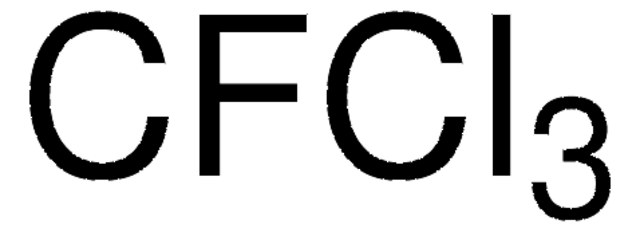466212
1,1,2-Trichloroethane
contains ≤3% 2-propanol as stabilizer, 97%
Synonyme(s) :
β-Trichloroethane, Vinyltrichloride
About This Item
Produits recommandés
Pureté
97%
Contient
≤3% 2-propanol as stabilizer
Indice de réfraction
n20/D 1.471 (lit.)
Point d'ébullition
110-115 °C (lit.)
Densité
1.435 g/mL at 25 °C (lit.)
Groupe fonctionnel
chloro
Chaîne SMILES
ClCC(Cl)Cl
InChI
1S/C2H3Cl3/c3-1-2(4)5/h2H,1H2
Clé InChI
UBOXGVDOUJQMTN-UHFFFAOYSA-N
Vous recherchez des produits similaires ? Visite Guide de comparaison des produits
Description générale
Application
- Advanced Material Development: Research into the synthesis of UiO-66 3D photonic crystals highlights the use of 1,1,2-Trichloroethane in the creation of new materials for efficient vapor detection, supporting advancements in sensor technology (Wang et al., 2022).
Mention d'avertissement
Danger
Mentions de danger
Classification des risques
Acute Tox. 3 Inhalation - Acute Tox. 4 Dermal - Acute Tox. 4 Oral - Aquatic Chronic 3 - Carc. 2
Risques supp
Code de la classe de stockage
6.1C - Combustible acute toxic Cat.3 / toxic compounds or compounds which causing chronic effects
Classe de danger pour l'eau (WGK)
WGK 3
Faites votre choix parmi les versions les plus récentes :
Déjà en possession de ce produit ?
Retrouvez la documentation relative aux produits que vous avez récemment achetés dans la Bibliothèque de documents.
Les clients ont également consulté
Protocoles
US EPA Method TO-17: GC Analysis of Volatiles on VOCOL® after Collection/Desorption using Air Toxics Tube
Notre équipe de scientifiques dispose d'une expérience dans tous les secteurs de la recherche, notamment en sciences de la vie, science des matériaux, synthèse chimique, chromatographie, analyse et dans de nombreux autres domaines..
Contacter notre Service technique











